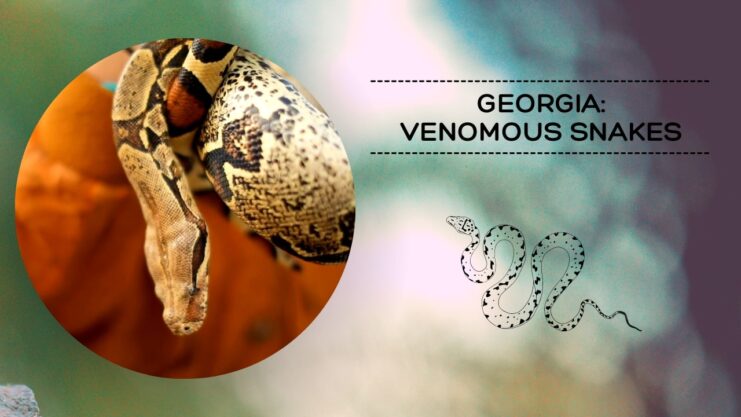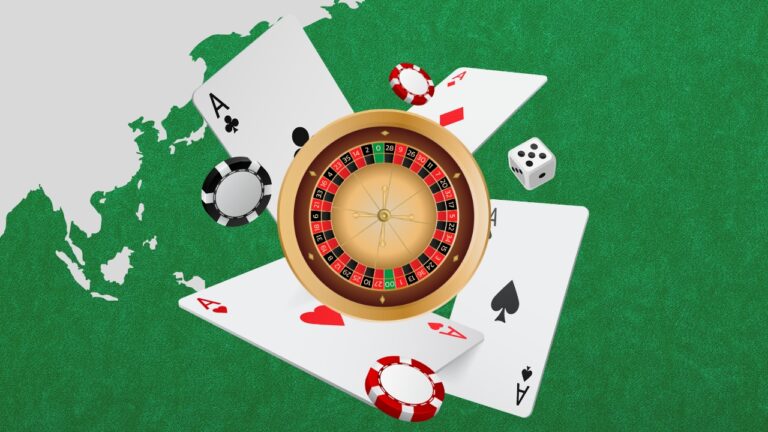Georgia, a state known for its rich biodiversity, is home to a wide array of snake species. Among the 47 species found in the state, six are venomous and pose a potential threat to humans.
This article provides an in-depth look at these venomous snakes, their characteristics, their habitats, and the precautions one should take when encountering them. Join us as we embark on an exciting journey into the realm of venomous snakes in the Peach State!
Georgia’s Six Venomous Serpents
1. Copperhead (Agkistrodon contortrix)
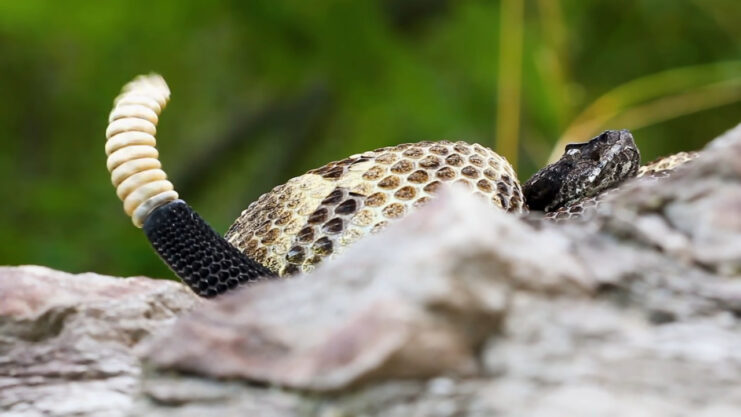
Copperheads are the most common venomous snakes in Georgia. They are easily identifiable by their distinctive reddish-brown head and hourglass-shaped bands. While their venom is not typically lethal to humans, a bite can cause severe pain and should be treated immediately.
2. Eastern Cottonmouth (Agkistrodon piscivorus)
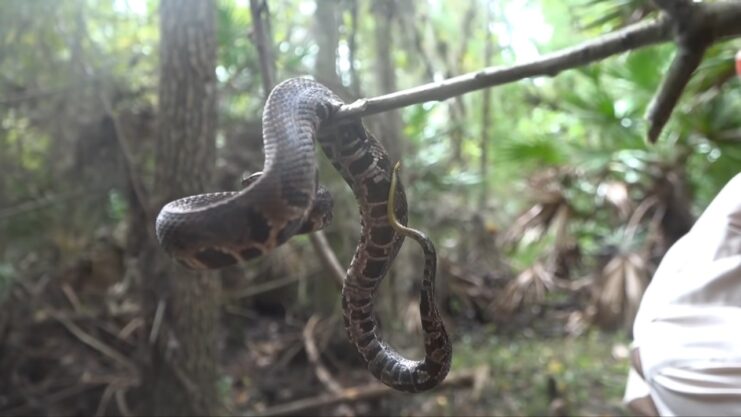
Also known as the Water Moccasin, the Eastern Cottonmouth is a semi-aquatic snake found in both land and water. They have dark bands running the length of their body and light yellow underbellies. Although not typically aggressive, they will bite when threatened or provoked.
3. Eastern Coral Snake (Micrurus fulvius)
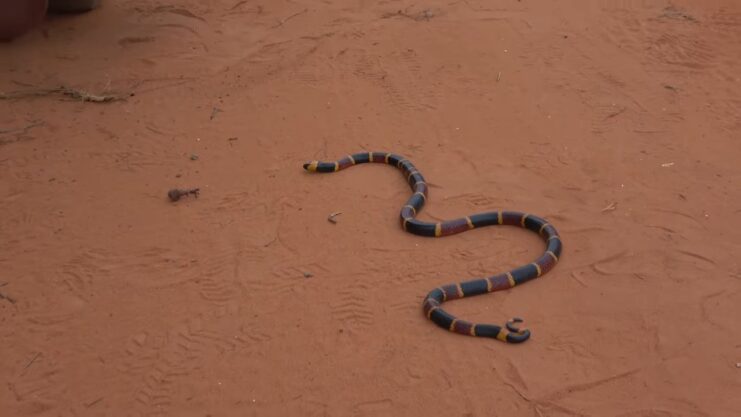
The Eastern Coral Snake is slender with bright red, yellow, and black rings. Their venom is neurotoxic, affecting the nervous system and causing paralysis. However, bites from this snake are rare and usually not fatal.
4. Eastern Diamondback Rattlesnake (Crotalus adamanteus)
The Eastern Diamondback Rattlesnake is the largest venomous snake in North America. They have diamond patterns that are brown on the inside and lighter coloring around the edges, with a large diamond-shaped head. Their venom is extremely potent and can be fatal to humans.
5. Timber Rattlesnake (Crotalus horridus)
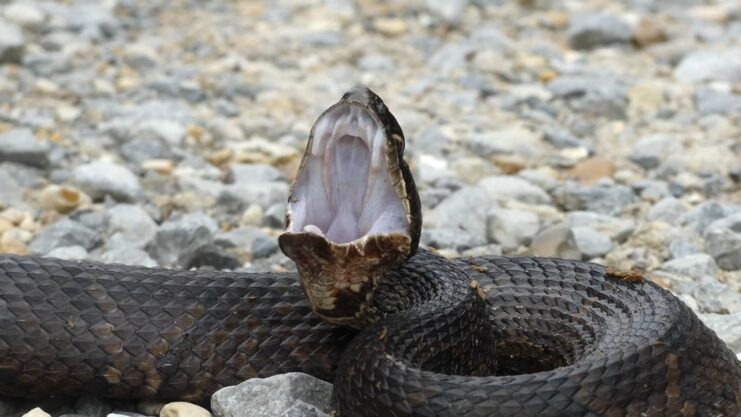
The Timber Rattlesnake, also known as the Canebrake Rattlesnake, prefers wooded, undisturbed areas. They have rounded bands around their bodies, with a brown stripe along the back and a prominent rattle at the end of the tail. Their venom is highly toxic and can be fatal if not treated promptly.
6. Pigmy Rattlesnake (Sistrurus miliarius)
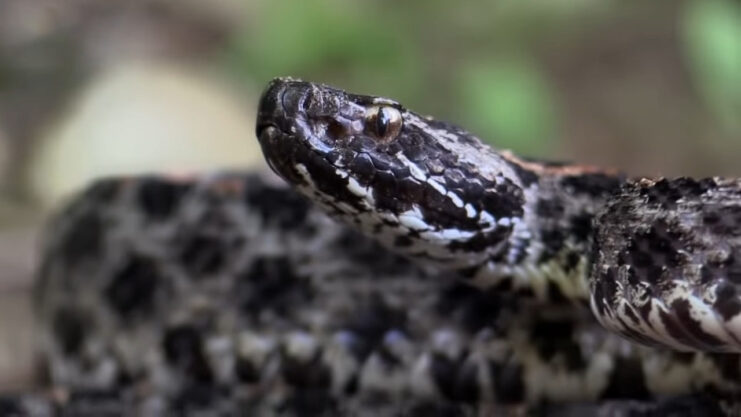
The Pigmy Rattlesnake is the smallest of the rattlesnakes found in Georgia. They have mid-dorsal spots ranging from black to reddish-brown. Although their venom is rarely fatal, a bite can cause extreme pain and should be treated immediately.
| Snake Species | Identifying Features | Habitat | Venom Type |
|---|---|---|---|
| Copperhead | Reddish-brown head, hourglass-shaped bands | Forested regions | Hemotoxic |
| Eastern Cottonmouth | Dark bands, light yellow underbelly | Land and water | Hemotoxic |
| Eastern Coral Snake | Red, yellow, and black rings | Coastal Plain region | Neurotoxic |
| Eastern Diamondback Rattlesnake | Diamond patterns, large diamond-shaped head | Various | Hemotoxic |
| Timber Rattlesnake | Rounded bands, brown stripe along the back, rattle at tail end | Wooded, undisturbed areas | Neurotoxic |
| Pigmy Rattlesnake | Mid-dorsal spots ranging from black to reddish-brown | Piedmont and Mountain regions | Cytotoxic |
Living With Snakes in Georgia
Despite the potential danger they pose, it’s important to remember that snakes play a crucial role in our ecosystem. They help control the population of rats, mice, and other pests, and their presence can be a sign of a healthy environment.
Interestingly, the venomous snakes of Connecticut also play similar roles in their respective ecosystems. However, as human development continues to encroach on their habitats, encounters with snakes are likely to increase.
To reduce the risk of snake bites, avoid places where snakes may live, such as tall grass, piles of leaves, or rocks. Always watch where you step or place your hands, especially when in their habitats. If you encounter a snake, do not attempt to handle it. Back away slowly and give it space to retreat.
What To Do in Case of a Snakebite
If you or someone else is bitten by a snake, it’s crucial to stay calm and seek medical attention immediately. Note the color and shape of the snake for identification purposes, as this can help medical professionals determine the appropriate treatment.
Wash the wound with soap and water, then cover it with a clean, dry dressing. Do not attempt to suck out the venom or apply a tourniquet, as these methods can cause more harm than good.
First Aid for Snakebites
| Do’s | Don’t’s |
|---|---|
| Keep still and stay calm | Do not pick up or trap the snake |
| Remove all jewelry and tight clothing | Do not apply a tourniquet or restrict blood flow |
| Note the color and shape of the snake | Do not cut the wound |
| Wash the bite with soap and water | Do not attempt to suck out the venom |
| Call the Georgia Poison Center | Do not apply heat, cold, electricity, or any substance to the bite |
Precautions To Avoid Snakes
To ensure your safety and reduce the risk of snakebites, it’s important to take certain precautions, especially when you’re in areas known to be inhabited by snakes. Here’s a list of measures you can take to avoid encounters with these creatures:
- Be aware of your surroundings: Always be mindful of where you are, especially when you’re in areas known to be inhabited by snakes. This includes forests, swamps, rocky areas, and tall grasses.
- Watch your step: Snakes often hide in tall grass, under rocks, or in piles of leaves. Be careful when stepping over logs or rocks, and avoid walking through tall grass if possible.
- Do not attempt to handle or provoke a snake: If you encounter a snake, do not try to handle or provoke it. Most snakes will not attack unless they feel threatened.
- Wear appropriate attire: If you’re in an area where snakes are common, wear boots and long pants to protect your legs and feet. Gloves can also be helpful if you’re handling materials where snakes might be hiding.
- Educate yourself and others about the different species of snakes in your area: Knowing how to identify different snake species can help you assess the level of danger if you encounter one. Remember, not all snakes are venomous.
- Keep your yard clean: Snakes are attracted to places where they can hide or find food. Keeping your yard clean of debris, like piles of wood or leaves, can make it less attractive to snakes.
Conclusion
While the presence of venomous snakes in Georgia may seem daunting, it’s important to remember that these creatures are a vital part of our ecosystem. By understanding their behaviors and identifying features and habitats, we can coexist with them safely. Always respect their space, and remember that they are more afraid of you than you are of them.

